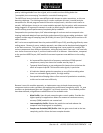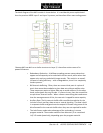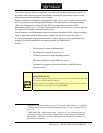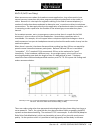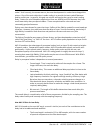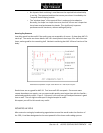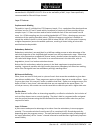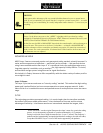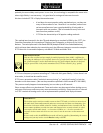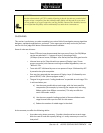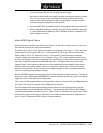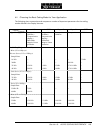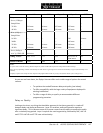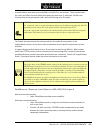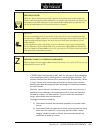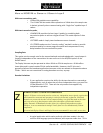
USER’S MANUAL
Section 6: AUDIO CODING REFERENCE 123
probablythemostwidelyusedsystem.Inourview,thistechnologyisacceptableformonovoice
wherehighfidelityisnotnecessary.Itisgoodalsoforcueingandintercomchannels.
WehaveincludedG.722inZephyrXstreambecause:
• Ithadbeenthemostpopularcodingmethodearlyon,sothereare
manyofthesecode
csinuse.Becauseitisastandard,codecsfrom
variousmanufacturershaveagoodprobabilityofbeingableto
interworkwithone‐another.(We’vetestedwithmanyunitsand
havefoundnoproblemssofar.)
• G.722hasthelowestdelayofallpopularcodingmethods.
Thismet
hodwasinventedinthelate70sandadoptedasastandardin1984bytheCCITT,the
ConsultiveCommitteeforInternationalTelephonyandTelegraphy,adivisionoftheUnited
Nations.Thetechnique
usedisSub‐BandADPCM(AdaptiveDeltaPulseCodeModulation),
whichachievesdatareductionbytransmittingonlythedifferencebetweensuccessivesamples.
G.722doesthisintwoaudiofrequencysub‐bands:50‐4kHzand4kHz‐7kHz.
t
DEEP TECH NOTE!
Only two bits are allocated per sample for audio frequencies above 4 kHz – sufficient for
conveying the sibilance in voice signals, but not very good for intricate musical sounds. Also,
the “predictor model” used to determine the step size in the adaptive function is designed
only for speech. This is why music transmitted via G.722 has a distinct ‘fuzzy’ quality.
G.722hasafrequencyresponseextendingto7.5kHzwithfairlypoorfidelity.Unlessthereisno
alternative,itshouldnotbeusedformusic.
G.722usesaprocedurecalled“statisticalrecoverytiming”or“statisticalframing”tolockthe
decodertothedatastream.(WeusetheproceduresspecifiedinANSIsta
ndardT1.306‐1989.)
Thisprocessusuallyhappensinstantaneously,butcantakeupto30seconds.
Otherstrangeeffectsmaybeobserved.Tonesandnoisesmaybepresentbeforelockingoccurs,
andsomecontinuousaudiotonesmaycausemomentaryunlocking.Pleasenotethisisinherent
inG.722’sstatisticalframingandisnotanimplementationproble
mwithZephyrXstream.
w
IMPORTANT!
The locking can be sensitive to audio present on the G.722 path, as it relies on properties of
the audio itself. Some audio material and tones can prevent lock from ever happening. Low
level noise is the most reliable signal for locking, and undistorted voice is usually OK. The
most common problems are with sine tones and distorted voice or music signals, in which
case turning off the audio signal — or lowering it 12dB or so — for a few seconds will
generally let the system relock. In very rare cases, it may be necessary to disconnect and
redial.
In cases such as this, the AUTO Receive mode will not be capable of determining the correct
settings and you may need to set the Receive setting to G.722.



